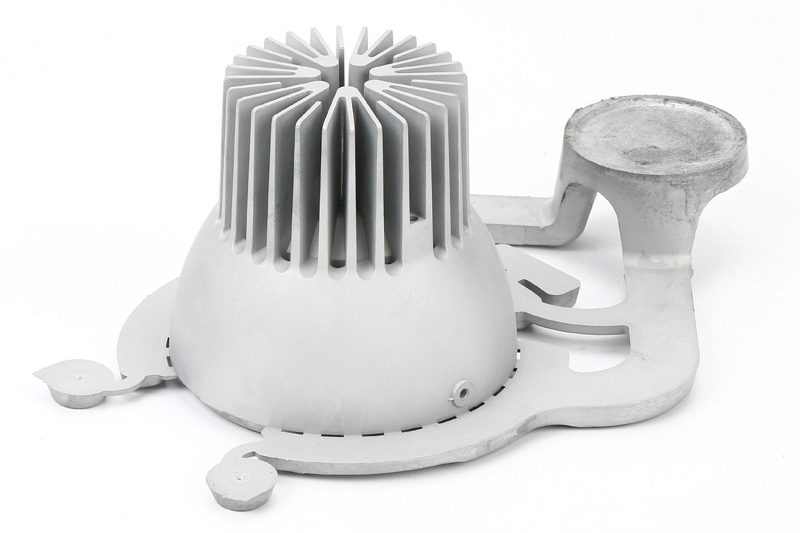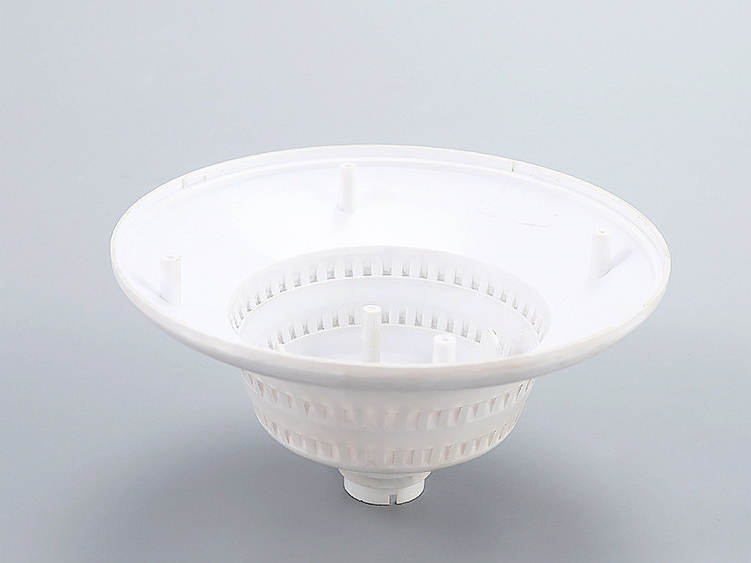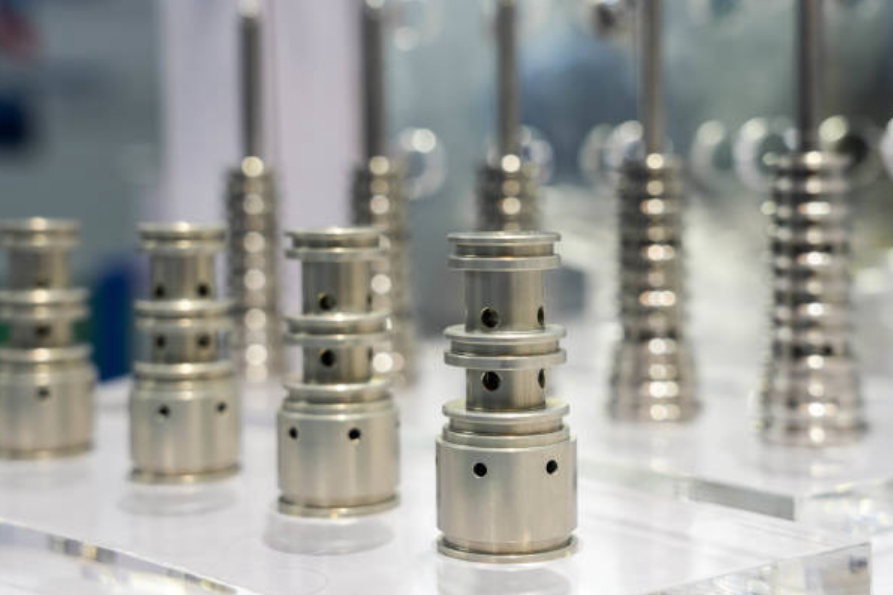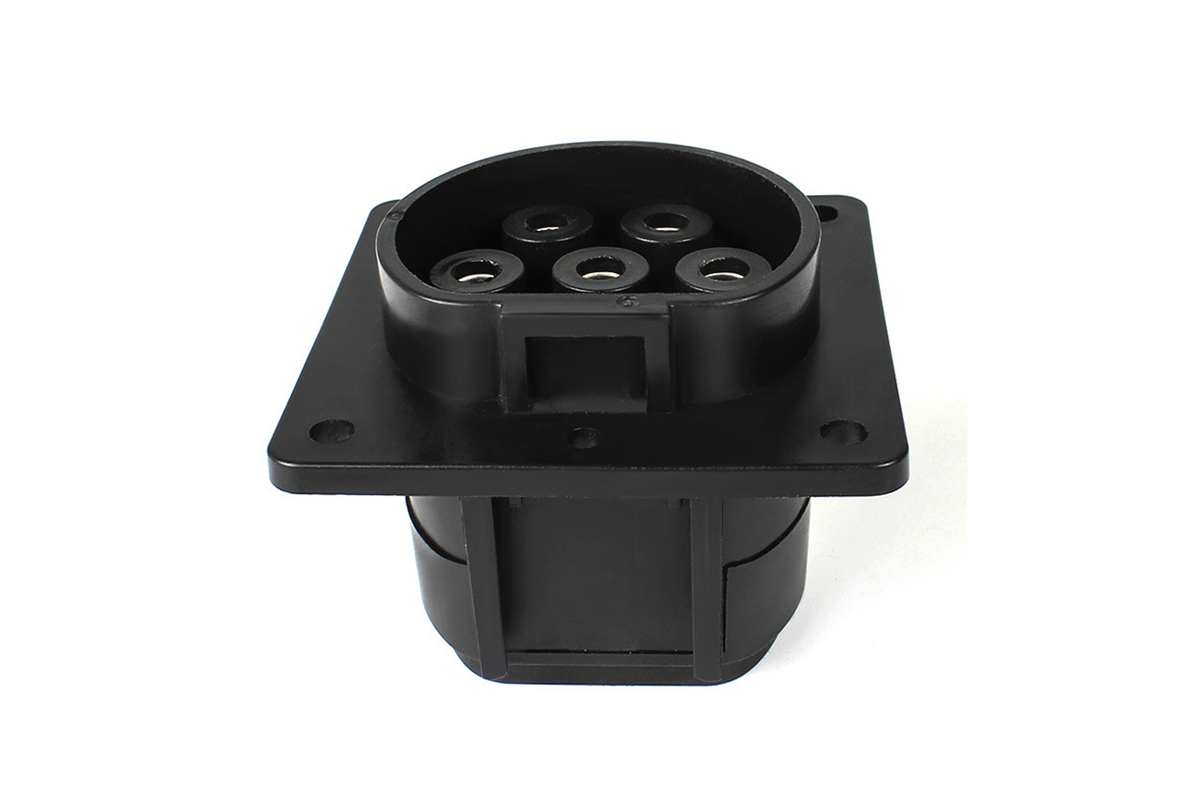Advanced Lighting Thermal Management Components
With the rapid advancement of modern lighting technologies, thermal management has become a core factor determining the performance, lifespan, and reliability of lighting systems. As the engineering team at Neway, we understand the critical importance of efficient thermal management solutions in maintaining LED luminous stability, extending service life, and ensuring color consistency. From high-power stadium lighting to precision indoor luminaires, the design of every thermal management component directly affects overall system performance.
Core Manufacturing Processes for Advanced Lighting Thermal Management Components
Innovative Design and Manufacturing of High-Efficiency Heatsinks
In lighting heatsink manufacturing, we use aluminum die casting technology to produce integrated heatsinks with complex three-dimensional fin structures. By utilizing computational fluid dynamics (CFD) to optimize the design, we achieve ideal fin spacing and height ratios, thereby maximizing the heat dissipation surface area within a limited space. For heatsinks requiring higher precision, our CNC machining prototyping services enable the production of thermal components with microchannel cooling structures, where channel widths can be controlled to within 0.5 mm, significantly enhancing cooling efficiency. Our heatsink designs consider not only thermal performance, but also aesthetics and ease of installation, providing customers with comprehensive solutions.
Heat Pipe and Vapor Chamber Integrated Technologies
For high-power-density LED lighting systems, we have developed advanced cooling solutions that integrate heat pipes and vapor chambers. Heat pipes utilize the phase-change heat transfer of internal working fluids to rapidly transfer heat from LED chips to remote heat sink fins. The thermal conductivity of our heat pipes can be hundreds of times higher than that of conventional aluminum, effectively resolving localized hot spot issues. Vapor chambers enable two-dimensional heat spreading, providing a uniform temperature distribution for high-power LED arrays. Through specialized sintering processes and vacuum sealing technologies, we ensure stable performance of these two-phase heat transfer components throughout the entire service life of the lighting equipment.
Manufacturing of Active Cooling System Components
For applications requiring more aggressive cooling, we use precision sheet metal fabrication technologies to produce fan brackets and ducting components. These parts are aerodynamically optimized to generate maximum airflow with minimal noise. We pay particular attention to vibration control and noise reduction, ensuring structural stability and consistency through precise stamping and bending processes. By intelligently combining active cooling systems with passive heatsinks, our thermal management solutions can be tailored to a wide range of applications, from indoor architectural lighting to high-power outdoor floodlights.
Surface Treatments and Interface Technologies for Enhanced Thermal Performance
In the manufacturing of thermal management components, surface treatment processes are essential for improving heat dissipation performance. Our anodizing treatments not only provide excellent corrosion protection for aluminum heatsinks, but more importantly, significantly increase surface emissivity through the formation of porous oxide layers. Test data show that specially anodized heatsinks can achieve more than 25% improvement in radiative heat dissipation compared with conventional finishes. For thermal interface materials, we recommend phase-change materials and thermal greases, which effectively fill microscopic surface irregularities and minimize thermal resistance at the interface. Through precise coating process control, we optimize material thickness to ensure superior thermal conduction.
Key Material Selection for Thermal Management Components
High Thermal Conductivity Metals
In terms of material selection, we offer professional recommendations tailored to specific application needs. For most lighting systems, we recommend copper alloys for critical heat-spreading parts. With thermal conductivity up to 400 W/m·K, these materials efficiently transfer heat away from LED chips. Through specialized forging and heat treatment, we produce copper alloys with directionally aligned grain structures, which improve axial thermal conductivity by up to 20% compared to conventional materials. For weight-sensitive applications, we have developed high-thermal-conductivity aluminum alloys that maintain strong thermal performance while reducing weight by approximately 60% compared to traditional copper, providing lighting designers with greater flexibility.
Advanced Thermally Conductive Dielectric Materials
For electrically insulated LED substrate applications, we offer aluminum nitride and alumina substrates produced via our ceramic injection molding services. Aluminum nitride ceramics feature thermal conductivity up to 170 W/m·K while maintaining excellent insulation properties, making them ideal for high-power LED packaging. For specialized applications, we utilize high-performance engineering plastics, such as PEEK, to manufacture thermal structural components that offer adequate thermal conduction, combined with low weight and strong chemical resistance. Through precise formulation and process control, we ensure each thermally conductive component meets stringent performance requirements.
Applications of Neway Thermal Management Solutions in Lighting Systems
High-Power LED Lighting Systems
In the lighting solutions sector, we provide specialized thermal management components for a wide range of high-power LED systems. For stadium lighting, our cooling solutions ensure that LED modules above 1000 W maintain stable junction temperatures during long-term operation. Through innovative fin design and material selection, we reduce heatsink weight to approximately 70% of that of traditional designs while improving cooling performance by around 30%. In stage lighting applications, our heat pipe-based cooling solutions effectively address the thermal challenges of high-power LEDs in compact spaces, enabling more flexible and creative fixture designs.
Specialized Lighting Environment Applications
For explosion-proof lighting and harsh outdoor environments, we impose even higher requirements on thermal management components. Our explosion-proof luminaire heatsinks not only comply with ATEX certification standards but also pass rigorous thermal cycling and corrosion tests. In outdoor lighting, we pay close attention to weatherability and corrosion resistance, using specialized surface treatments to ensure long-term reliability in humid, salty, and other demanding environments. Our thermal management solutions have been successfully deployed on offshore platforms, in tunnels, and in other specialized lighting scenarios, earning broad recognition from our customers.
Choose Neway to Build a Reliable Thermal Foundation for Your Lighting Systems
At Neway, we have established a comprehensive R&D framework for thermal management technologies. From thermal simulation and prototype manufacturing to performance testing and reliability validation, every stage is supported by dedicated teams and advanced equipment. Our engineers possess extensive expertise in both optics and thermal management, enabling us to offer full technical support from concept design through to mass production. Through rigorous quality control processes and robust supply chain management, we ensure every thermal management component meets the highest standards of quality and performance. Our goal is to provide customers with efficient, reliable, and cost-effective thermal management solutions that drive innovation in lighting technology.
Conclusion: Innovative Thermal Management, Illuminating the Future of Lighting
As LED technologies continue to advance and lighting applications become more diversified, efficient thermal management will remain a key pillar of the industry. Leveraging our deep expertise in materials science, thermal design, and precision manufacturing, Neway is committed to providing state-of-the-art thermal management solutions for lighting manufacturers worldwide. We believe that through continuous innovation and close collaboration with our customers, we can jointly create a brighter future for lighting technology.
FAQ
What parameters are vital for thermal design in high-power LED luminaires?
How to balance lightweight design with thermal performance in lighting systems?
How to choose active vs passive cooling for different lighting applications?
How does Neway ensure long-term reliability of lighting thermal solutions?
What factors most impact natural convection efficiency in heatsink design?




